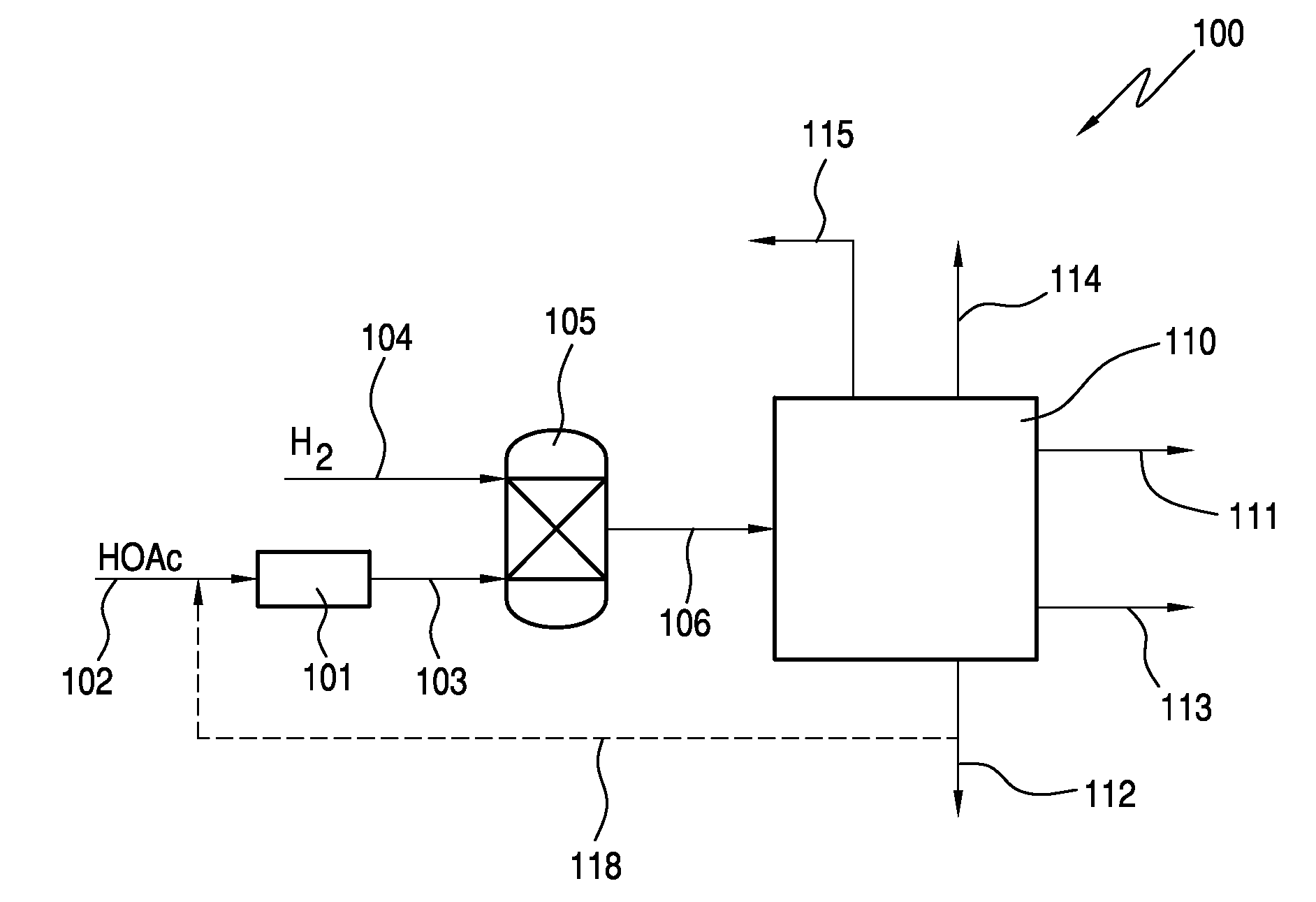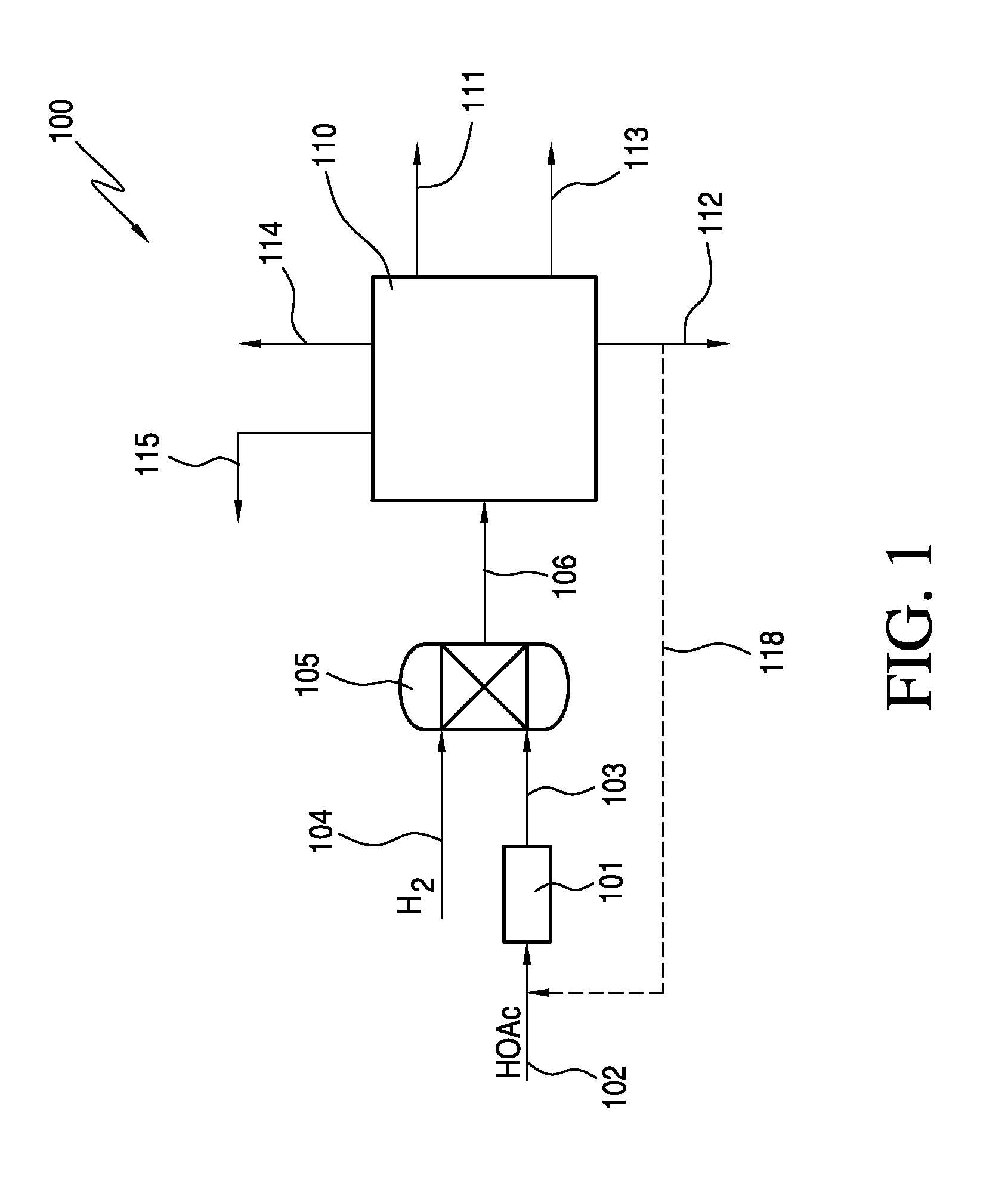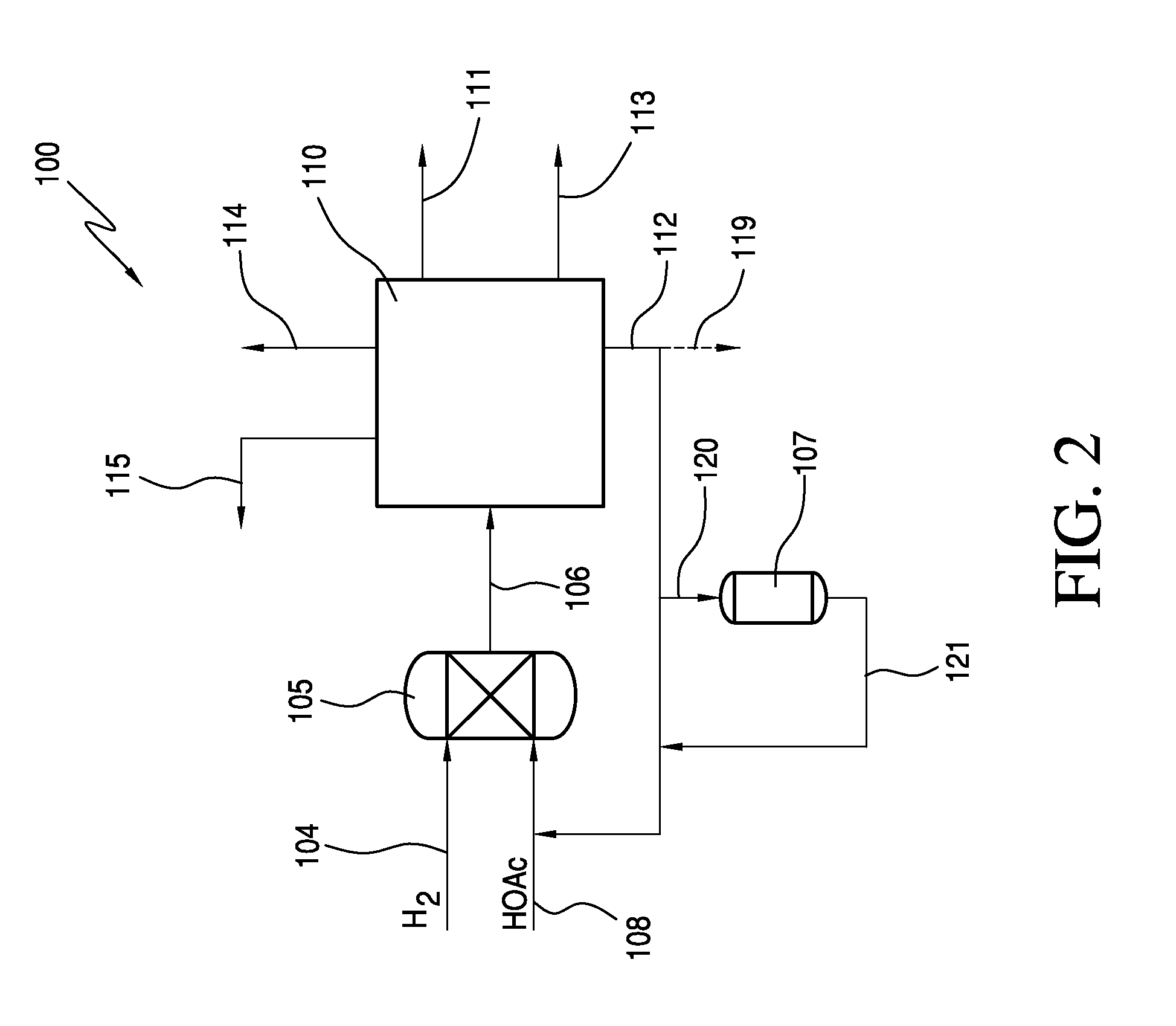Alcohol Production Process with Impurity Removal
a technology of impurity removal and production process, which is applied in the direction of organic chemistry, chemistry apparatus and processes, and preparation of oxygen-containing compounds, can solve the problems of negative impact on catalyst performance and lifetime, leaching of corrosion metals from processing conduits, reactors, other vessels, etc., and achieve the effect of reducing the concentration of corrosion metals
- Summary
- Abstract
- Description
- Claims
- Application Information
AI Technical Summary
Benefits of technology
Problems solved by technology
Method used
Image
Examples
Embodiment Construction
Introduction
[0016]The present invention relates to processes for recovering ethanol produced by hydrogenating acetic acid in the presence of a catalyst to produce a crude ethanol product. Depending on the source of the acetic acid, the acetic acid feed stream may include one or more halogen impurities, in particular iodide and compounds thereof, and / or sulfur compounds. The acetic acid feed stream may also comprise metal contaminants, such as chromium, rhodium, iridium, platinum, iron, nickel, and / or palladium. The presence of halogen and / or sulfur impurities, even in very low levels such as less than 100 wppm, may be harmful to the hydrogenation catalyst resulting in loss of catalytic function. In addition, removing halogen and / or sulfur impurities from the hydrogenation process, even if not harmful to the particular type of catalyst, also advantageously reduces the concentration of such impurities in the final ethanol product that is ultimately recovered from the crude ethanol pro...
PUM
| Property | Measurement | Unit |
|---|---|---|
| temperature | aaaaa | aaaaa |
| degree of cross linking | aaaaa | aaaaa |
| degree of cross linking | aaaaa | aaaaa |
Abstract
Description
Claims
Application Information
 Login to View More
Login to View More - R&D
- Intellectual Property
- Life Sciences
- Materials
- Tech Scout
- Unparalleled Data Quality
- Higher Quality Content
- 60% Fewer Hallucinations
Browse by: Latest US Patents, China's latest patents, Technical Efficacy Thesaurus, Application Domain, Technology Topic, Popular Technical Reports.
© 2025 PatSnap. All rights reserved.Legal|Privacy policy|Modern Slavery Act Transparency Statement|Sitemap|About US| Contact US: help@patsnap.com



